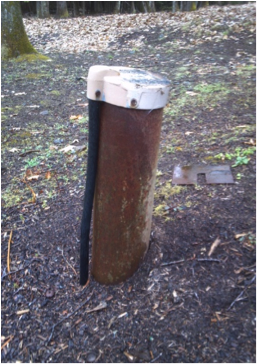Buying or Selling a Home – Recommended Water and Radon Testing Recommendations

Recommended Water and Radon Testing Recommendations
Buying or Selling a Home
Preparing to sell a house can be a daunting process. There are a number of simple things the homeowner can do to make sure the process proceeds as smoothly as possible.
Why test before buying or selling a home?
We recommend the owner perform water and radon air testing prior to listing the home. If they have water treatment equipment that has not been serviced within the past year, it should be serviced before performing any water tests.
Why test prior to listing?
Performing water and radon air testing prior to listing is a good idea because:
- Nearly all buyers will direct a home inspector to perform these tests.
- Health-related drinking water standards are continually reviewed and changed. A “good” test from ten years ago may not be “good” today.
- Well water can change. Road work, a new well on adjacent property and other factors can cause the well water to change.
- Identifying problems early means the seller can research solutions carefully and fix them prior to listing or prepare to negotiate with a buyer to resolve the issue.
WATER AND RADON TESTING RECOMMENDATIONS
At a minimum, we recommend a standard mortgage test plus arsenic, uranium, and radon. These are the most often requested tests by a buyer.
If the house was built before 1986, you may want to consider performing a first draw lead sample. If you do not perform this test, be sure to be prepared to install a point of use system for lead in the event the buyer asks for this test and the results are high.
PREPARING THE WELL –
One of the most common water tests that fails is the test for bacteria. This failure is caused by organic material in the well. Any organic matter that is allowed to enter the well will cause a bacteria test to fail. Most of the time it is a simple matter of cleaning the well and making sure it stays clean.
DUG WELLS –
Remove the well cover and inspect the well for any organic material like roots, insect nests, spider webs etc. Clean these out of the well. Seal any holes that will allow any reentering of these items. Sanitize the well with bleach. Before any further water testing, use a chlorine test kit to confirm all the chlorine has been flushed from the well water.
DRILLED WELLS-
If you do not have a sanitary well cover, install one. A sanitary cover will prevent the entry of organic material like grass clipping and insects. (See Figures 1 & 2 below)
VACANT OR SEASONAL HOMES –
Wells of unoccupied houses should be flushed to provide a more accurate picture of what the water will be like with normal use. We recommend running approximately 200 to 300 gallons of water from the well each day for 4 days. This will ensure that the stagnant volume of water in the well has been removed. Perform the recommended water testing only after this process is complete.



